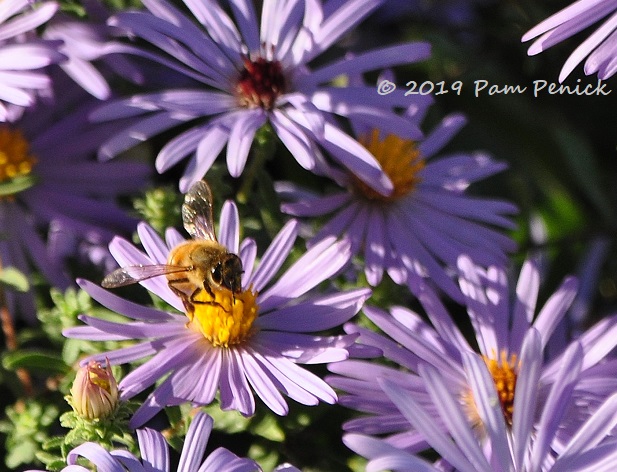Read This: The Pollinator Victory Garden

Today is Earth Day, a reminder to do all we can to help Mother Nature and make a positive difference for the health of our planet. May I suggest a goal of making your yard or garden (or balcony or patio!) more attractive to pollinators? Gardening to attract pollinators means you’ll enjoy a more flowery, plant-diverse, bee- and butterfly-friendly yard, and you’ll be reducing or eliminating pesticide use, viewing bug-chewed leaves as a sign of garden health rather than a problem, and relaxing more and tidying your garden less. Win-win!

Author Kim Eierman shows us how in her new book, The Pollinator Victory Garden: Win the War on Pollinator Decline with Ecological Gardening, sub-subtitled How to Attract and Support Bees, Beetles, Butterflies, Bats, and Other Pollinators (Quarry Books, January 2020). Perfectly titled for this anxious time we’re living through, it’s a call-back to the victory gardens planted by civilians during wartime. Today, as we shelter at home from a viral enemy, we can plant our own victory gardens. Edibles, sure, but Eierman is here to advocate for plants and habitat for pollinators, many of whom, especially all-important bee populations, are themselves embattled and suffering alarming population declines.

A New York-based environmental horticulturist and the founder of EcoBeneficial!, a horticulture communications and consulting company, Eierman persuasively lays out the case for increasing pollinator habitat on a yard-by-yard basis. Commercial and residential development of formerly wild spaces, widespread pesticide use, climate change, the maintenance of millions of acres of pollinator deserts, aka lawns — for these reasons and more Eierman says we must each think harder and plant smarter to create wildlife corridors throughout our communities. Yard by yard, we can make safe zones for pollinators to thrive.

“A flower garden devoid of good nesting, sheltering, and wintering sites is not a Pollinator Victory Garden; it’s merely a floral buffet.” –Kim Eierman
Most of us gardeners are happy to plant flowering plants for butterflies and bees. Hummingbirds? Of course! But I hadn’t given as much thought to pollinating moths, beetles, flies, and even wasps. (There are many species of tiny, beneficial wasps that pose no danger to humans.) And as Eierman points out, it’s not enough to plant flowers that make nectar and pollen to feed pollinators. You must also have plants, maintained without pesticides, that pollinators can lay eggs on, that caterpillars can eat, and that can be left standing all winter into spring to give pollinators a safe place to overwinter.

If it seems like a lot to think about, sure, it can be. As Eierman urges, however, even a few plants can make a difference. And once you start thinking about ways to make your garden more attractive and hospitable to these often-unappreciated heroes of the insect world, the more excited you may get. After all, the payoff is huge! Aside from the beauty of the flowers themselves, you’ll see better pollination of your flowering plants (not just perennials but trees, shrubs, annuals, and edibles), which depend on insect pollination to set fruit and create the next generation of seed. You’ll also find joy in the beauty and activity of diverse species of pollinating creatures and in knowing that you’re making a difference and helping Mother Earth.
Disclosure: Quarry Books sent me a copy of The Pollinator Victory Garden for review. I reviewed it at my own discretion and without any compensation. This post, as with everything at Digging, is my own personal opinion.
Digging Deeper
__________________________
Come learn about gardening and design at Garden Spark! I organize in-person talks by inspiring designers, landscape architects, authors, and gardeners a few times a year in Austin. These are limited-attendance events that sell out quickly, so join the Garden Spark email list to be notified in advance; simply click this link and ask to be added. Season 8 kicks off in fall 2024. Stay tuned for more info!
All material © 2025 by Pam Penick for Digging. Unauthorized reproduction prohibited.


I love pollinator gardens. Thank you for the timely post. And I will look into this book to gain more insight. Our garden is a certified wildlife habitat. I take the National Wildlife Federation guidelines into consideration when I plan gardens for others. I was at a lecture once on pollinators and the speaker said butterflies are gateway pollinators. And once you understand there importance you will be happy to see even flies in your garden. : )
I like that idea — gateway pollinators! I’ve been working on getting our exchange student not to fear bees and explaining how beneficial they are. No luck so far, but I keep trying. 😉